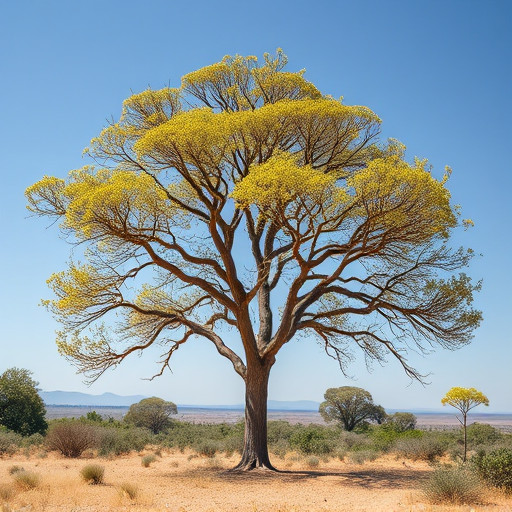The Acacia tree genus, native to Africa, Asia, Australia, and Europe, offers diverse varieties adapted to specific environments. Critical ecosystem services include soil stabilization, habitat provision, and air/water purification. Human activities like deforestation and climate change threaten Acacia populations, while its wood and cultural significance make it a valuable global resource.
The acacia tree, with its diverse species and striking resilience, has captured the attention of global botanists and communities alike. This multifaceted tree, scientifically classified under the genus Acacia, is not only a symbol of ecological diversity but also holds immense cultural and economic value worldwide. Its range stretches across continents, each region boasting unique varieties adapted to local climates. From arid deserts to lush forests, acacia trees play vital roles in ecosystems, providing habitat, fostering biodiversity, and offering sustenance to both flora and fauna.
- Acacia Tree: Global Distribution and Varieties
- Environmental Role and Impact
- Cultural Significance and Economic Uses
Acacia Tree: Global Distribution and Varieties

The Acacia tree is a diverse genus of shrubs and trees native to various regions worldwide, boasting an impressive global reach. Its distribution spans across Africa, Asia, Australia, and parts of Europe, making it a truly cosmopolitan species. This wide-ranging distribution has led to the development of numerous varieties, each adapted to its specific environment.
In Africa, acacia trees are a dominant feature of the landscape, particularly in arid and semi-arid zones. The Acacia senegal, for example, is renowned for its extensive distribution across sub-Saharan Africa and its significance in local ecosystems. Asia hosts several unique species, such as the Indian Acacia (Acacia nilotica), which has cultural and economic importance in the region. Down under in Australia, acacias are a cornerstone of the indigenous flora, with the Wandoan acacia (Acacia wandoana) being a prominent example, known for its distinctive features and resilience to local conditions.
Environmental Role and Impact

The Acacia tree plays a vital role in many ecosystems worldwide, acting as a cornerstone species in various environments. Their deep root systems help prevent soil erosion, while their dense foliage provides habitat and food for numerous animals, from birds and insects to small mammals. These trees are also natural filters, purifying the air and water around them by absorbing pollutants and heavy metals.
However, the impact of Acacia trees extends beyond local ecosystems. In some regions, they have been significantly affected by human activities like deforestation and climate change. The clearing of lands for agriculture and urban development has led to a decline in their populations, disrupting natural balances. Moreover, changing rainfall patterns due to global warming have made certain Acacia species more vulnerable, leading to concerns about their long-term survival in some areas.
Cultural Significance and Economic Uses

The Acacia tree holds cultural significance across various communities worldwide, often symbolizing strength, resilience, and community in many traditional societies. Its wooden elements have been used for crafting tools, weapons, and furniture, reflecting its importance as a resource for sustenance and trade. In some cultures, certain species of acacia are associated with spiritual beliefs and practices, featuring prominently in rituals and ceremonies.
Economically, the Acacia tree offers diverse uses. Its nectar is harvested for honey production, contributing to local beekeeping industries. The bark, leaves, and seeds of several Acacia species have been explored for their medicinal properties, driving interest in natural health products. Furthermore, its fast growth rate makes it a valuable candidate for reforestation projects, helping to combat desertification and improve ecosystem services.
The acacia tree, with its diverse species and remarkable adaptability, plays a significant role in shaping ecosystems worldwide. From its environmental benefits to cultural and economic uses, this versatile plant has left an indelible mark on various landscapes. Understanding its global distribution and the varied ways it enriches our world is a testament to nature’s resilience and beauty.
